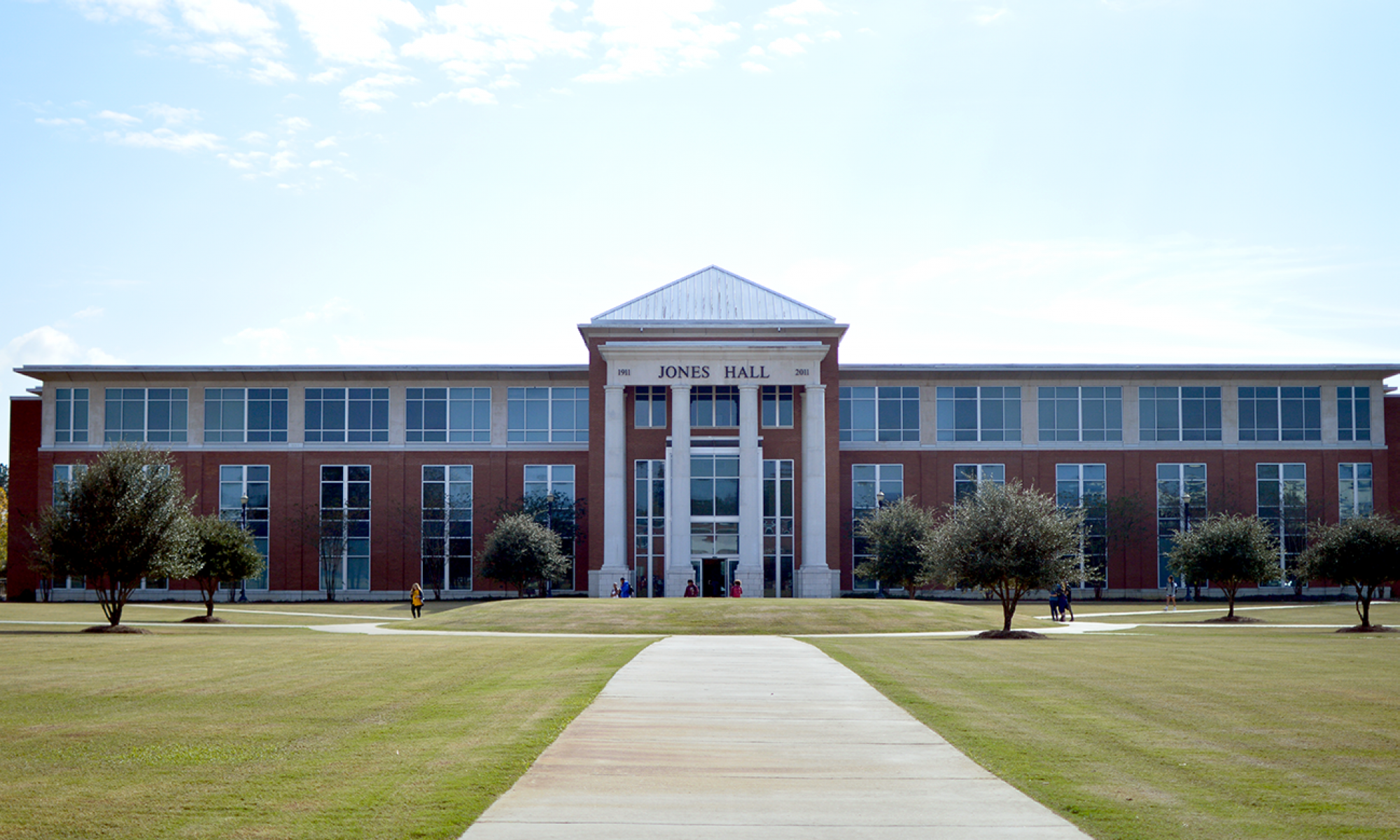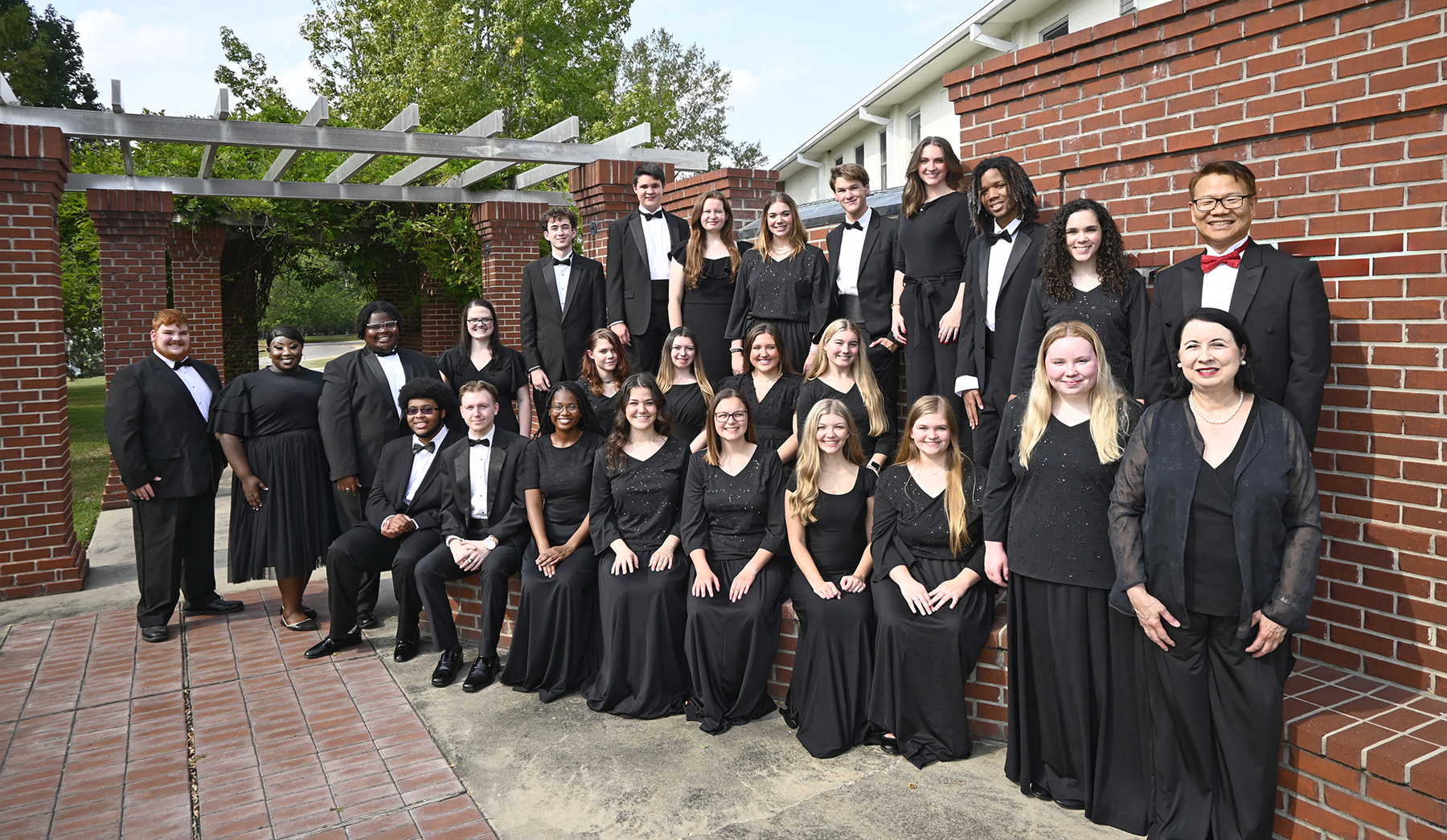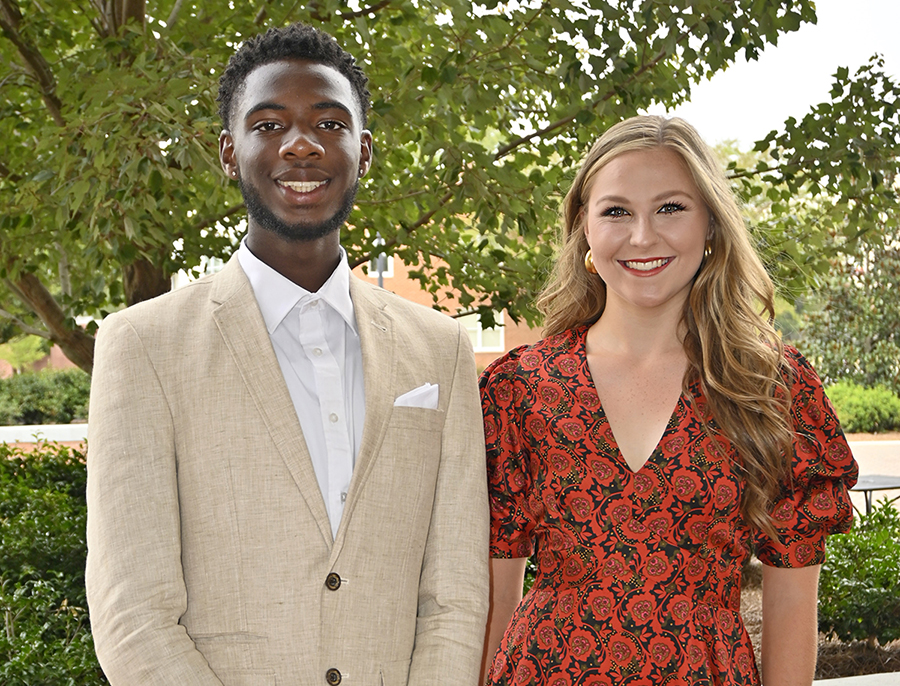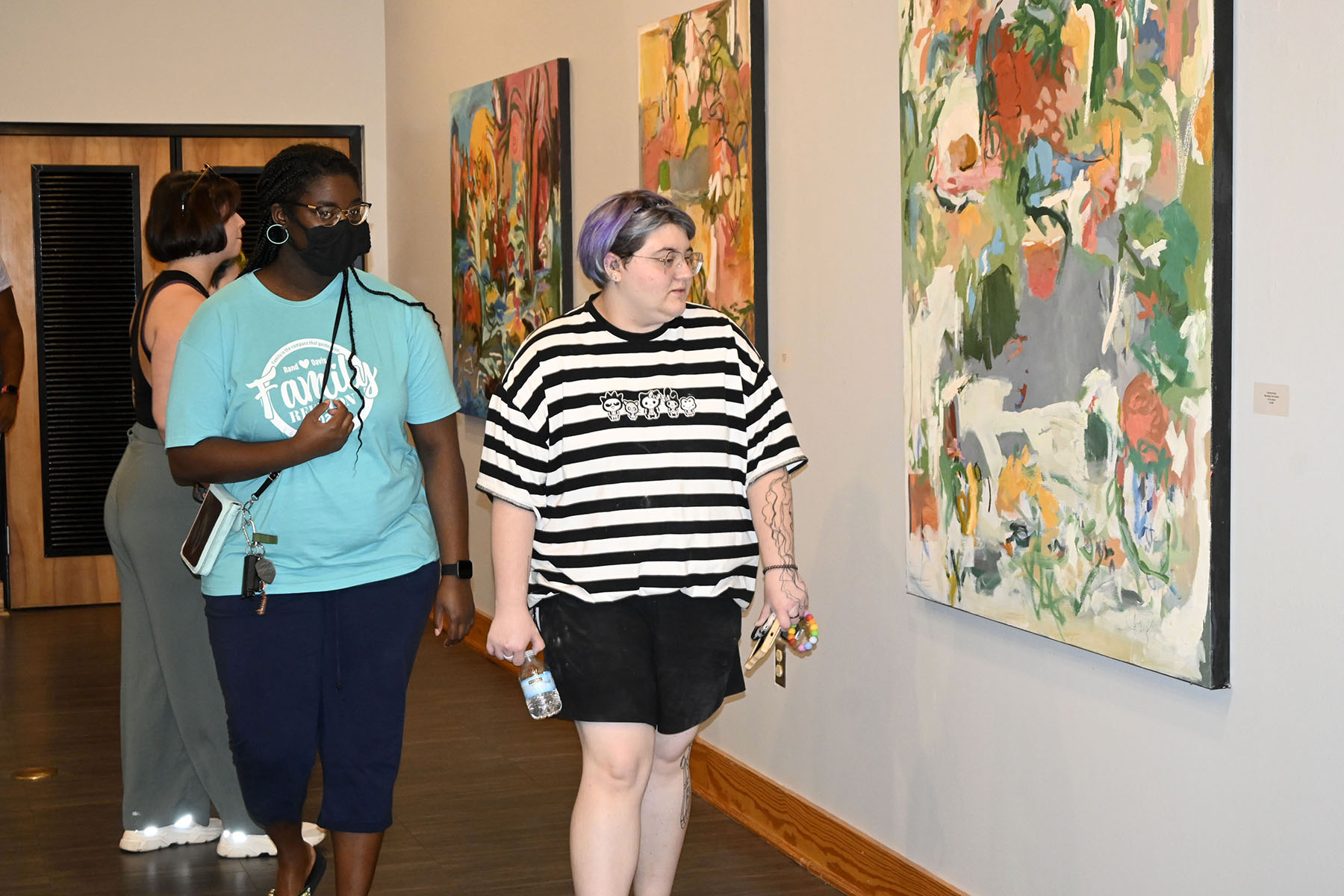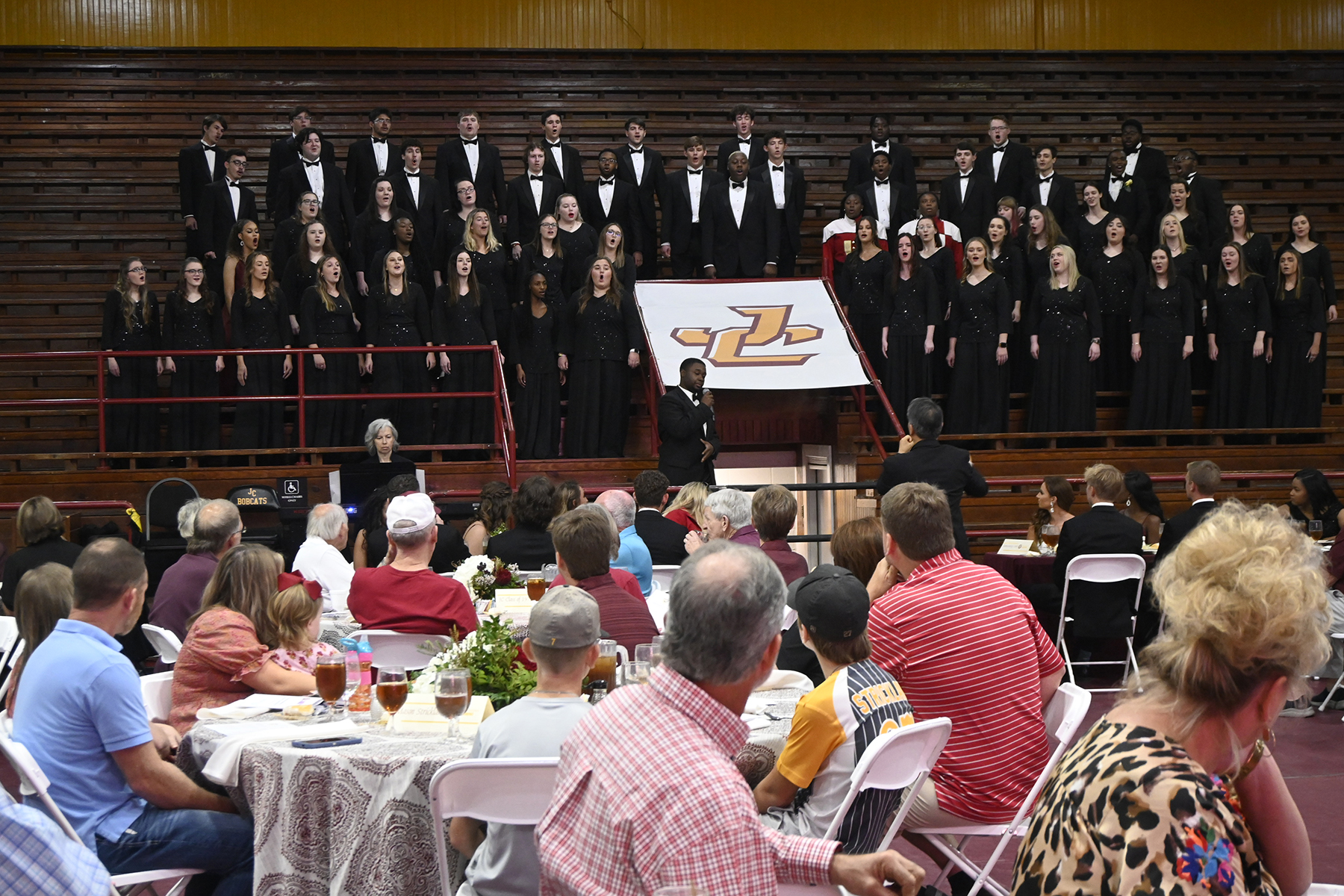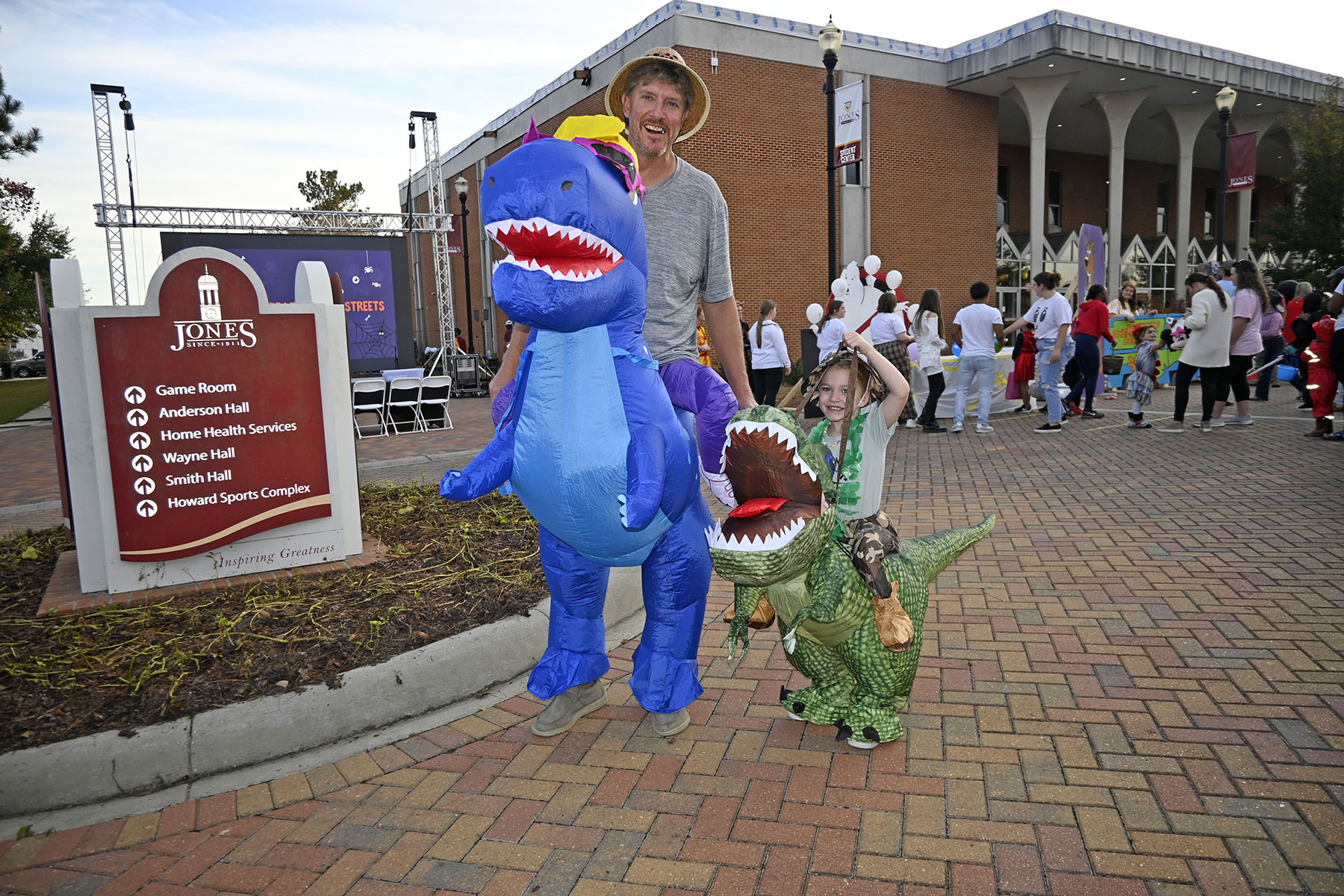Jones College’s JC Voices performing at Lauren Rogers Museum of Art
ELLISVILLE- Jones College’s select vocal ensemble, JC Voices will be performing for the first time at the Lauren Rogers Museum of Art in Laurel, on Thursday, November 9, at 6 p.m. The vocal performance entitled, “Original Design” is a concert filled with the message of hope in today’s worldly challenges. Choral Director, Dr. Imgyu Kang said many are still dealing with the impact of the Covid pandemic and music is a way to offer peace in the darkness.

“This world seems to be getting darker and darker with war and hunger. I believe that we were originally designed and created with blessings of joy and love to share with one another, and I hope that this concert can be a time for restoration. I hope this music will be a light in all the darkness in the world today and that it can unite us in the face of such division,” said Kang.
Some of the vocal selections performed by the 25-member ensemble include music from the Renaissance and Baroque periods, along with contemporary, hymnal and spiritual songs. Additionally, as a South Korean immigrant who has been living in the U.S. for 25 years, Dr. Kang will be sharing a Korean folk song he and his wife, Sungsil arranged called, “Arirang” which mixes the melody of the American religious hymn, “Amazing Grace” with the Korean folk song, “Arirang.”
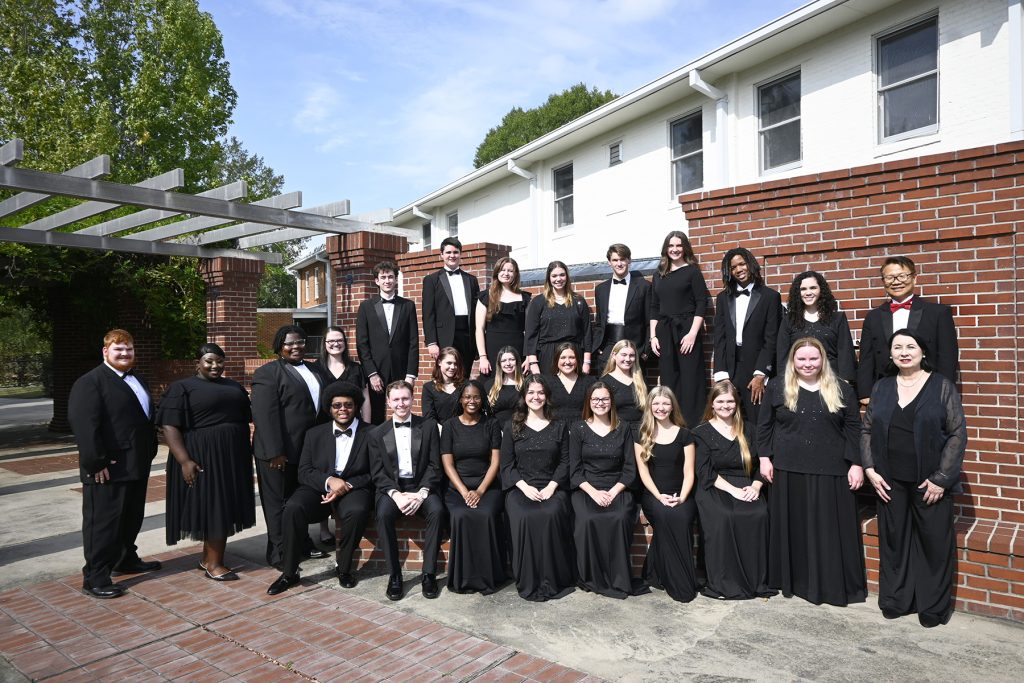
Jones College JC Voices Fall 2023
Trinity Amason, Mize
Kimberly Arevalo, Pearl
Marvertrius Arrington, Waynesboro
Karoline Ayres, Heidelberg
Daniel Baldwin, Meridian
Hannah Byrd, State Line
Walker Dear, Florence
Jessie Deare, Sumrall
Silas Ensign, Laurel
Caleb Griffin, Meridian
Hope Houston, Laurel
Irish Horne, Petal
Anna Grace Jolly, Laurel
Samantha Jordan, Mobile, AL
Dwight McClendon, Hattiesburg
Micah McSwain, Laurel
Danielle Parker, Laurel
Morgan Prestage, Morton
Karina Ross, Slidell, LA
Madeline Russell, Columbia
Marcus Sims, Laurel
Kyllee Sumrall, Laurel
Zoe Vanderslice, Stringer
Skylar White, Laurel
Lillian Wilson, Laurel
Jones College students select Mr. & Miss JC
ELLISVILLE –Jaythan Comegys of Laurel and Taylor Garretson of Leakesville were recently voted as Mr. and Miss JC by their peers. The sophomores competed for the titles to represent Jones College students and are considered to be the best representation of the student body. They will be recognized during Homecoming activities on Saturday, October 28, 2023.
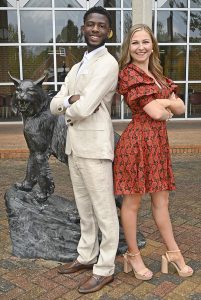
“With having a family full of Jones alumni, it feels so incredible to continue on the legacy of being a Bobcat. Having the opportunity to have been chosen by my peers to represent Jones College is truly one of the greatest honors I have ever received because of the impact that this school has had on my life. Jones has been and will always be home for me no matter where I go in life,” said Garretson.
The 2023 Miss Hospitality of Leakesville and the 2022 Distinguished Young Woman of Greene County graduated from Greene County High School, third in her class while being a High School Dance Team Captain and being a part of the Center Stage Dance Competition Team. At Jones College, Garretson has been a member of the Bobcat Brigade student Ambassadors, Student Government Association, Philosophy Club, Phi Theta Kappa Honor Society and a writer for the Lair Yearbook, as well as captain of the Touch of Gold Dance Team. Last year, the Bobcat Broadcast anchor/reporter earned first place honors from the Mississippi Press Association for the Best Use of Video. Her future plans include earning a broadcast meteorology degree from Mississippi State University. Her parents are Ron and Vicky Garretson.
Computer Science major, Jaythan Comegys participated in Beta Club, Key Club and student council at Laurel High School. At Jones College, he is a member of the Bobcat Broadcast team, FBLA and an officer for the Bobcat Brigade. He plans to become a web developer after graduating from the University of Southern Mississippi.
“It is my honor to represent Jones College as Mr. JC and inspire others to step out of their comfort zone and to dream big. I did not get here alone and ever since I started college, I have had an amazing community to help me achieve my dreams,” said Comegys.
His parents are Shemica McGill and Stacy Comegys, and Demetra Comegys and Leo McGill.
Jones College students discover colorful artist, Chatham Kemp
ELLISVILLE – During Jones College’s “Art Talk” with Hattiesburg artist and William Carey University Associate Professor of Art and Department Chair, Chatham Kemp, Jones College art students and guests discovered why she focuses on the use of color in her oil paintings. A collection of Kemp’s large oil paintings influenced by tropical environments and other colorful locations, are currently on display at the Eula Bass Lewis Art Gallery on the Jones College campus in Ellisville.
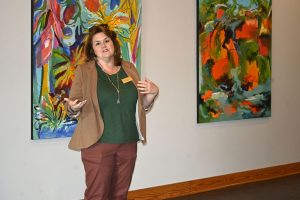
“Color is powerful because it’s emotional. I think when we look at color it has a different effect on us than just looking at a drawing, so I hope the work feels joyful and alive. Also, I’ve been kind of interested in flirting with the line between the heat in the paintings feeling comfortable or feeling like the south or a tropical environment, or the heat feeling a little bit uncomfortable or a little bit inconvenient, so I think the exhibit is interesting for that reason,” said Kemp.
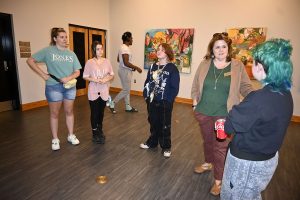
Jones College students, Atlas Hembree of Meridian, Ella Young of Laurel, Lillian Hall of Ellisville, and Anna Bufkin of Greene County discussed different aspects of art and design with Kemp prior to the Art Talk with a larger group of art majors and guests. She also offered the opportunities available to art students in the William Carey University art program which has been growing over the past 12 years. Additionally, Kemp offered some advice to the young artists still learning about the various options to market their artwork.
“It’s hard to make a living as an artist so you have to learn the business side, the marketing side and become an entrepreneur. Teaching is also a great way of making a living, along with graphic design but you have to be a self-starter. We teach you how to solve problems on a high level in terms of visual problems in painting and drawing classes which also apply to your life and career. So, don’t get discouraged if you’re not making your way; ask experienced artists for advice,” Kemp offered.
The large and colorful oil paintings by Kemp will be on display in the Eula Bass Lewis Art Gallery until October 20. For more information about upcoming JC art shows or to arrange a visit to the gallery call 601-477-8401. The Eula Bass Lewis Art Gallery is open Monday, Tuesday, Thursday, and Friday from 8 a.m. until 3 p.m., and by appointment only on Wednesdays. The gallery is closed during the holidays. If you want to know more about the Jones College Art Department, https://www.jcjc.edu/programs/finearts/ or the JC Art Department’s social media: Facebook page, https://www.facebook.com/JCJCFineArts/ and on Instagram @artatjonescollege.
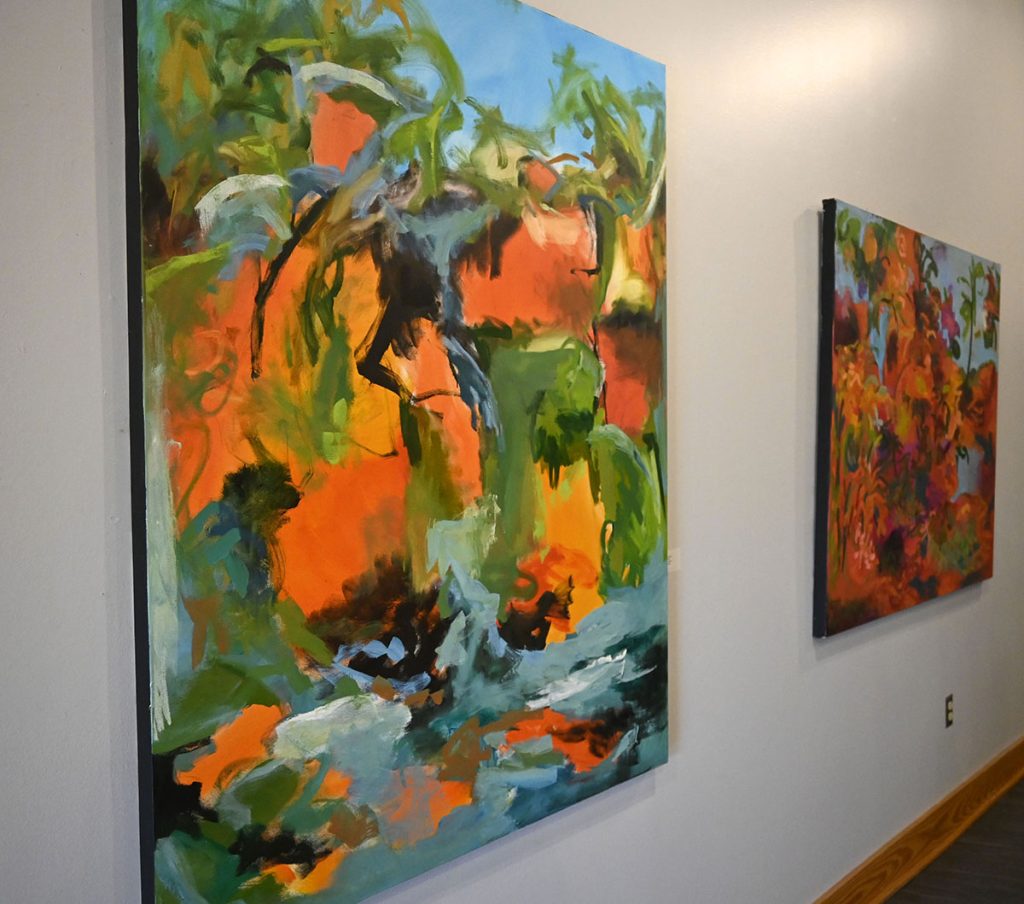
Jones College’s Concert Choirs fall performances announced
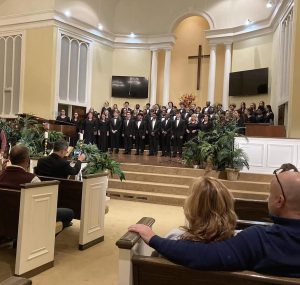
ELLISVILLE- Jones College’s Concert Choirs will be performing at several locations in the Jones County area this fall. The 75-member choral group will begin the concert season with a brief performance at the Alumni Luncheon during Homecoming activities on Saturday, October 28, at about noon in the A.B. Howard Gymnasium. On Sunday, October 29, Glade Baptist Church will host a 6 p.m. concert called, “Light,” and on Sunday, November 12, the Concert Choir will be hosted by the First Baptist Church of Ellisville at 6 p.m. for the “Lux” concert. The traveling performance season will conclude with a Christmas Concert at Moselle Memorial Baptist Church at 6 p.m. on Sunday, December 3.

The Jones College Fine Arts Department will hold its annual Christmas with the Arts, featuring all of the performing groups and special guests on Thursday and Friday, November 30, and December 1, at 7 p.m. in the M.P. Bush Fine Arts Auditorium. For more information about any of these performances check out the social media pages https://www.facebook.com/joneschoir or https://www.facebook.com/JCJCFineArts
Jones College Choir Members Hometown
Trinity Amason, Mize*
Kimberly Arevalo, Pearl*
Marvertrius Arrington, Waynesboro*
Karoline Ayres, Heidelberg*
Daniel Baldwin, Meridian*
James Brashier, Eucutta
Jayen Bridges, Laurel
Hannah Byrd, State Line*
Antarian Chapman, Hebron
Michael Clark, Laurel
Z’marion Cooley, Laurel
Angeleak Conerly, Columbia
Jaylynn Conner, Waynesboro
Walker Dear, Florence*
Jessie Deare, Sumrall*
Britton Dunnam, Sand Hill
Gabriel Elkins, Sandersville
Silas Ensign, Laurel*
Savannah Gatlin, Laurel*
Tristen Goss, Pulaski
Caleb Griffin, Meridian
Molly Griffin, Ellisville
Sam Griffith, Seminary
Loren Hardy, Laurel
Allari Hernandez, Laurel
Isaac Herrington, Laurel
Kaylee Hines, Waynesboro
Hope Houston, Laurel*
Irish Horne, Petal*
Carson Ishee, Laurel
Sydney Klaire Ivy, Raleigh
Anna Grace Jolly, Laurel*
Kaylee Jones, Raleigh
Samantha Jordan, Mobile, AL*
Hannah Latham, Minden, LA
Bri Lee, Moselle
Kiandra Lopez, Laurel
Cody Lowe, Laurel
Taylor McCraw, Laurel
Dwight McClendon, Hattiesburg*
Micah McSwain, Laurel*
Dasia Newell, Laurel
Kylie Noland, Killeen, TX
Danielle Parker, Laurel*
Ta’Nia Patrick, Columbia
Emilianna Pearson, Laurel
Marlee Pierce, Laurel
Morgan Prestage, Morton*
Sommer Ramsey, Laurel
Rodrick Rankin, Mt. Olive
Samah Ratcliffe, Hebron
Kailee Rogers, Laurel
Karlee Rogers, Laurel
Rustin Rounsaville, Ellisville
Karina Ross, Slidell, LA*
Madeline Russell, Columbia*
Maria Santos, Laurel
Haley Kat Shepherd, Petal
Jaylon Sims, Raleigh*
Marcus Sims, Laurel
Nicholas Singleterry, Hattiesburg
Kena Smith, Laurel
Kailand Snow, Laurel
Isaiah Spradley, Sopo
Kyllee Sumrall, Laurel*
Thomas Temple, Hattiesburg
Addie Thames, Laurel
Kameron Upchurch, Tupelo
Zoe Vanderslice, Stringer*
Aliyah Watts, Columbia
Skylar White, Laurel*
Kaydence Wilde, Charlevoix, MI
Lillian Wilson, Laurel*
Kaylee Wood, Laurel
Ella Young, Laurel
* Member of JC Voices
Halloween at Jones College’s “Treats in the Streets”
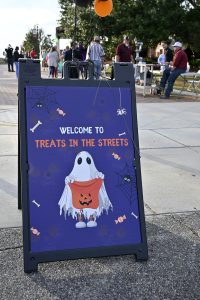
ELLISVILLE- Jones College’s Office of Student Affairs and Student Government Association along with campus clubs and organizations will host the annual “Treats in the Streets” night of activities on Tuesday, October 31, 2023, from 5 p.m. until 7:30 p.m. The trick-or-treat trail event will be held in front of the C.L. Neill Student Center Plaza, the place where the event originated 24 years ago. Admission is free unless otherwise noted, and the public is welcome to attend all events. The annual Treats in the Streets celebration is an outdoor event and may be canceled or modified if it rains or if the weather is not conducive for children.
From 5 p.m. until 7:30 p.m., JC clubs and organizations will have treats and games available beginning at the Student Center Plaza. The trick-or-treat trail continues around the A.B. Howard Gymnasium, and around the Hutcheson/Hubbard Administration Building, ending behind the Terrell Tisdale Library and beside the Humanities building. This event is for children, ages 0 to 12 years. All children must be accompanied by an adult to attend.
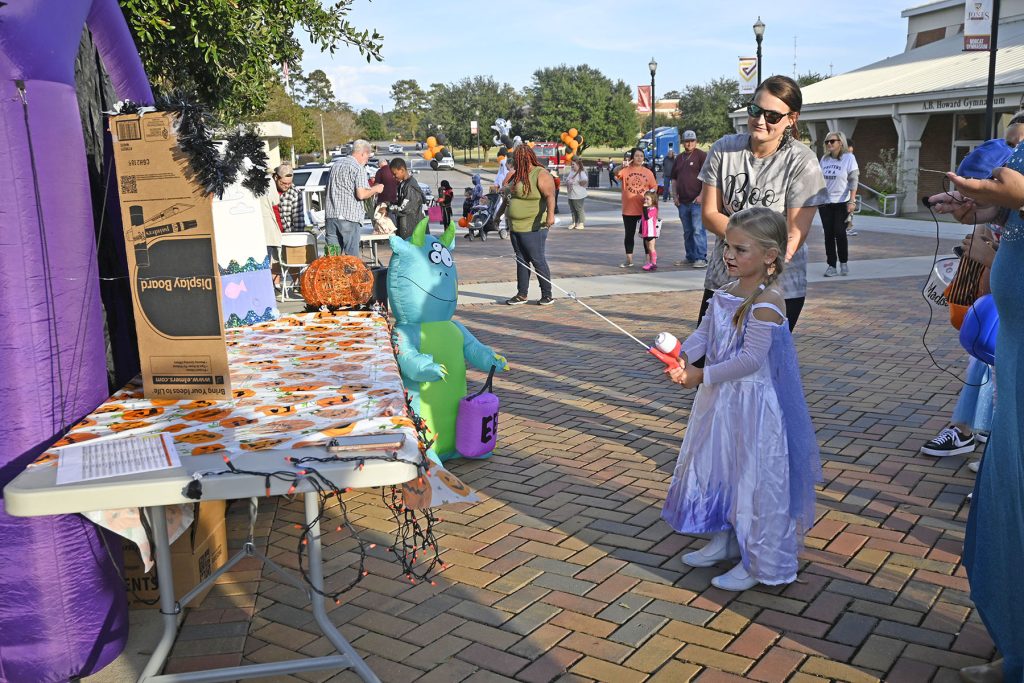
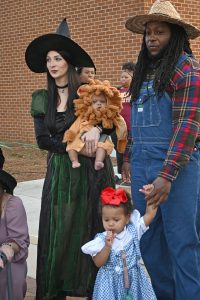
The costume contests will begin at 5:30 p.m. on the stage located between the C.L. Neill Student Center and the A.B. Howard Gymnasium, for kids ages 0 to 12. At 6 p.m., a costume contest for JC students will begin.
Also, the Jones College all-you-can-eat cafeteria will stay open for dinner until 7:30 p.m. The cost for children ages 4 to 9 years of age is $5.25 and for children ages 10 to adults the cost is $9.15 (tax included).
For more information about any of these activities please contact Ashliegh Badley at ashliegh.badley@jcjc.edu or call 601-477-2253.
